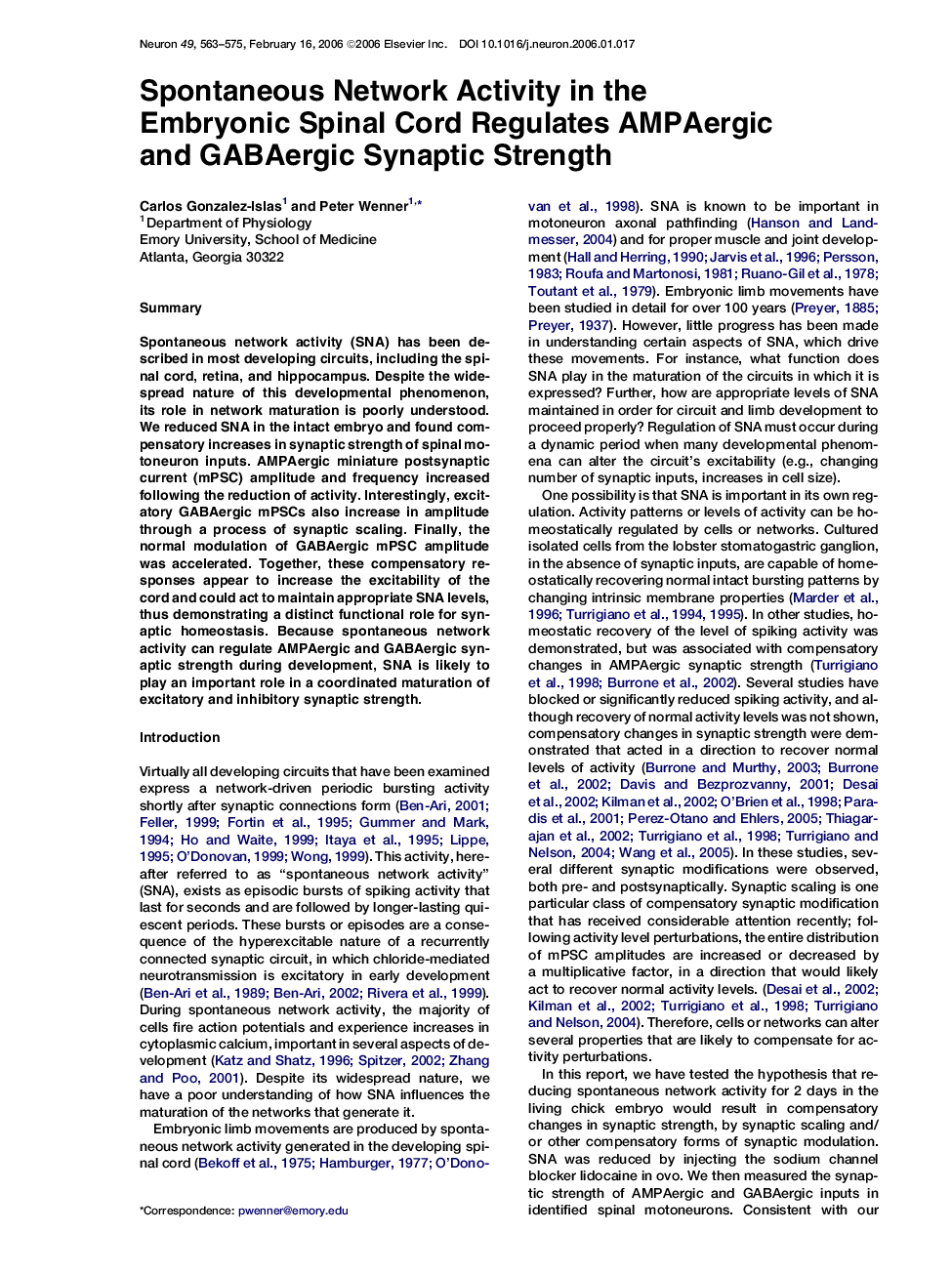| Article ID | Journal | Published Year | Pages | File Type |
|---|---|---|---|---|
| 4323352 | Neuron | 2006 | 13 Pages |
SummarySpontaneous network activity (SNA) has been described in most developing circuits, including the spinal cord, retina, and hippocampus. Despite the widespread nature of this developmental phenomenon, its role in network maturation is poorly understood. We reduced SNA in the intact embryo and found compensatory increases in synaptic strength of spinal motoneuron inputs. AMPAergic miniature postsynaptic current (mPSC) amplitude and frequency increased following the reduction of activity. Interestingly, excitatory GABAergic mPSCs also increase in amplitude through a process of synaptic scaling. Finally, the normal modulation of GABAergic mPSC amplitude was accelerated. Together, these compensatory responses appear to increase the excitability of the cord and could act to maintain appropriate SNA levels, thus demonstrating a distinct functional role for synaptic homeostasis. Because spontaneous network activity can regulate AMPAergic and GABAergic synaptic strength during development, SNA is likely to play an important role in a coordinated maturation of excitatory and inhibitory synaptic strength.
